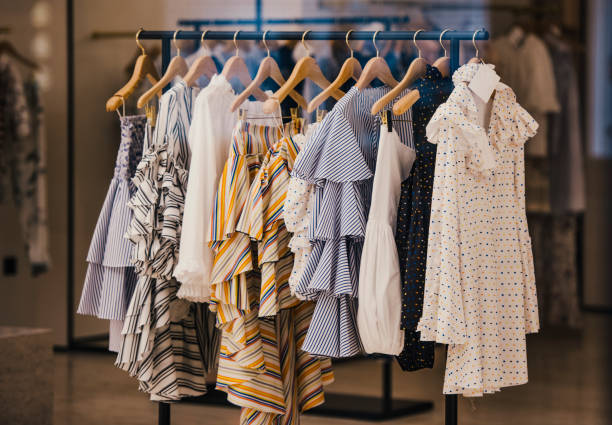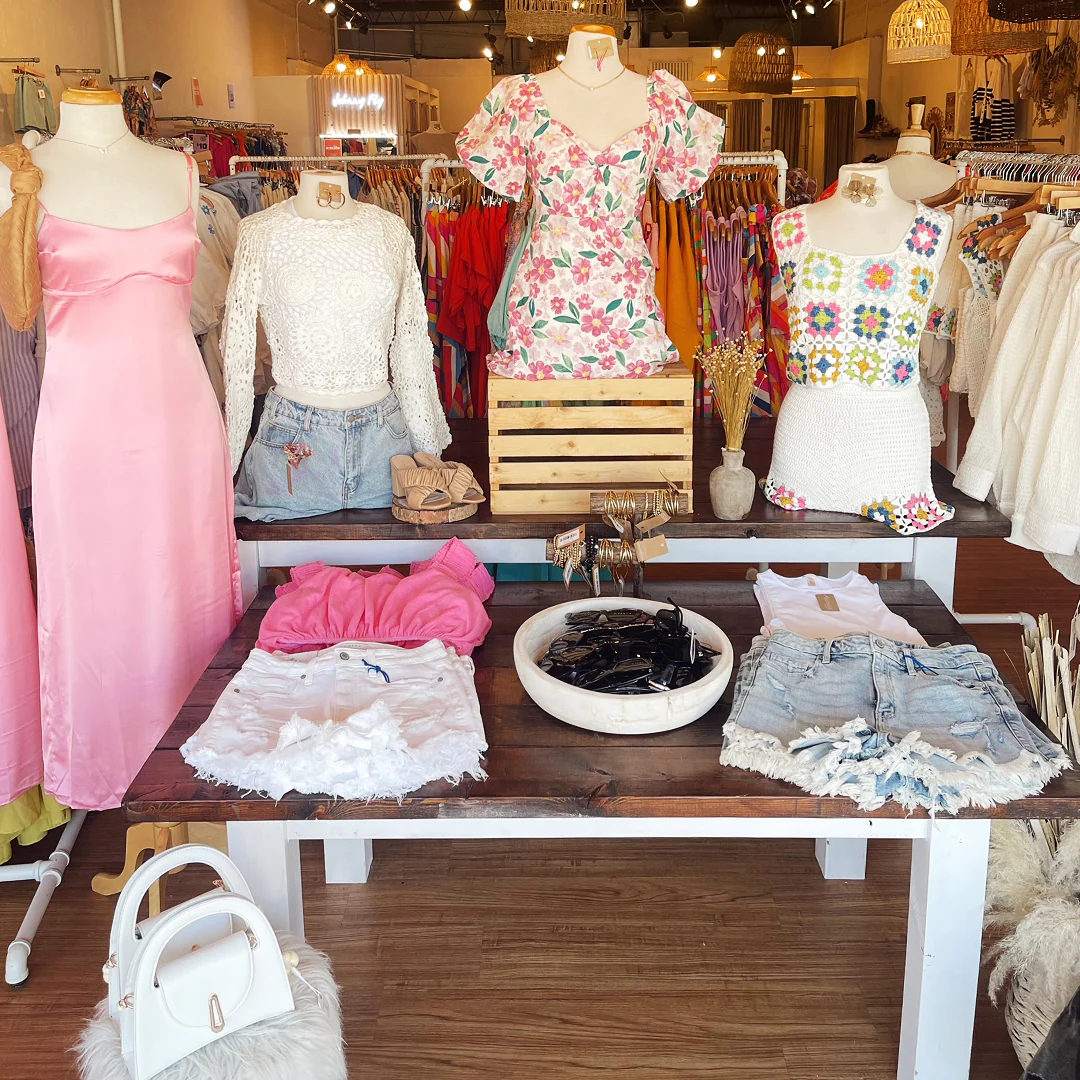Discovering the Evolution and Impact of Clothes on Modern Style Trends
The evolution of clothes has actually significantly influenced modern-day fashion fads, combining historic precedents with innovative technologies. Iconic figures like Coco Chanel and Yves Saint Laurent reinvented the garment industry by presenting principles that focus on convenience and accessibility, which continue to resonate today. On the other hand, technological strides in areas such as 3D printing and clever fabrics are redefining layout possibilities and consumer experiences. In addition, the expanding focus on inclusivity and sustainability is improving sector criteria. As we take into consideration these complex influences, one must question how these elements jointly redefine style's duty in mirroring and forming modern society.
Historical Style Influencers
In the tapestry of style history, certain numbers have left an indelible mark, forming the patterns and styles that specify entire periods. Coco Chanel, a cutting edge developer, redefined women's style by presenting comfortable, classy garments that departed from limiting bodices. Her famous Chanel suit and little black outfit have become ageless staples in wardrobes worldwide. In A Similar Way, Christian Dior's post-war "Makeover" in 1947, with its celebration of feminineness with full skirts and cinched waistlines, marked a go back to opulence and has actually continued to affect designers.
Elsa Schiaparelli is an additional critical number, renowned for her progressive designs that included surrealist art, collaborating with Salvador Dalí to create whimsical pieces that challenged traditional aesthetic appeals. Her cutting-edge use color and strong patterns resounds in contemporary fashion. Yves Saint Laurent, on the other hand, equalized high fashion with prêt-à-porter collections, bringing runway designs to the masses and setting a criterion for modern-day ready-to-wear lines.
These visionaries, among others, not just changed fashion in their times but likewise set sustaining trends that resonate in today's fashion market, giving a structure upon which modern designers remain to build and innovate. Their traditions highlight the value of creative thinking and bold in style's ever-evolving narrative.
Technological Improvements in vogue
In the middle of the vibrant landscape of the fashion business, technical improvements stand at the forefront of development, reshaping how designers create and consumers involve with style. The assimilation of 3D printing has actually revolutionized design procedures, making it possible for developers to trying out intricate frameworks and sustainable materials that were formerly unthinkable. This innovation helps with rapid prototyping, reducing waste and expediting production times.

Smart fabrics, embedding innovation right into textiles, are likewise changing the industry. Advancements like self-cleaning and temperature-regulating textiles offer improved capability and comfort. Wearable innovation, including functions like health and fitness tracking and communication, includes a brand-new measurement to fashion, merging appearances with practicality.
Cultural Changes and Style
As technological improvements remain to improve the garment industry, social changes are just as influential, redefining design and customer choices. In recent times, the surge of social media platforms has accelerated the dissemination investigate this site of global fashion trends, allowing diverse social impacts to exist side-by-side and merge. This electronic interconnectivity has actually assisted in the fast exchange of ideas, resulting in a much more comprehensive and diverse analysis of design that mirrors the diverse nature of contemporary society.
Cultural recognition and admiration have actually triggered designers to attract ideas from a more comprehensive range of ethnic and historical contexts, incorporating standard themes with contemporary aesthetics. This blend has actually led to fashion that reverberates with a broader audience, advertising a feeling of identity and belonging throughout different demographics. Additionally, the raising demand for personalization has actually driven brands to offer personalized choices, enabling customers to express originality while reflecting their social heritage.
Additionally, shifting social values have actually affected style, with inclusivity and diversity coming to be central motifs. The market has actually begun to embrace designs and influencers of various physique, ethnicities, and sex identities, difficult conventional appeal standards. This improvement underscores the power of social changes fit the future of style, as style ends up being a more authentic expression of individual and collective identity.
Sustainability and Modern Style
While the fashion industry continues to evolve, the vital for sustainability has actually ended up being significantly immediate, affecting modern-day layout techniques. The increase of sluggish fashion, which highlights high quality over quantity, encourages consumers to invest in timeless items instead than short-term patterns.
Furthermore, modern-day style is identified by its innovation in lessening waste and advertising circularity. This method not just reduces ecological effect but likewise boosts the social obligation of fashion houses.

Future Trends in Fashion

Sustainability you could try this out will remain to be a driving pressure in shaping future fashion fads. The industry is increasingly adopting environment-friendly products try this out and ethical production techniques, responding to a growing customer demand for responsible practices. Advancements such as bio-fabricated products and closed-loop recycling systems are established to redefine just how garments is produced and taken in, decreasing ecological influence while preserving style and high quality.
Social shifts, including the increase of inclusivity and diversity, will certainly also play a critical function. As society ends up being a lot more aware of social issues, style is expected to become a platform for expression and change. Developers will likely concentrate on creating collections that reflect a more comprehensive range of experiences and identities, championing depiction and availability.
Conclusion
The evolution of clothing considerably affects modern-day style patterns, where historical influences merge with contemporary designs. Key figures like Coco Chanel and Yves Saint Laurent have actually redefined design, while technical technologies such as 3D printing and clever textiles broaden creative opportunities. Social changes in the direction of inclusivity and sustainability oblige brands to welcome and embrace moral practices diversity. This continuous advancement emphasizes style's function as a mirror to social values and technical innovation, suggesting a future abundant with development and inclusivity.
The advancement of garments has actually significantly influenced modern-day fashion fads, merging historical criteria with innovative technologies.Among the vibrant landscape of the style market, technological improvements stand at the leading edge of development, reshaping how developers produce and customers engage with style.While the fashion market continues to develop, the vital for sustainability has actually ended up being increasingly immediate, influencing modern layout methods. As sustainability becomes ingrained in modern style, it leads the means for a much more aware and responsible fashion industry.
The development of clothing significantly impacts modern-day style patterns, where historic influences merge with modern layouts.